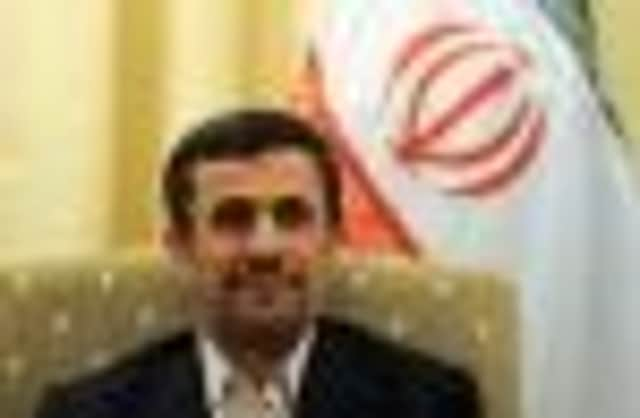Mahmoud Ahmadinejad’s future in the balance as Iran goes to polls


The fight for seats in Iran’s 290-member parliament boils down to a contest between conservative groups that have turned against each other after crushing reformists in the upheavals that followed his disputed re-election in 2009.
One bloc seeks to further diminish his political stature; the other hopes to give him a boost after being humbled in a power struggle with supreme leader Ayatollah Ali Khamenei.
Advertisement
Hide AdAdvertisement
Hide AdThe outcome will have little sway over Iran’s major policies – including its nuclear stand-off with the West – but could easily set the tone for Mr Ahmadinejad’s final stretch in office and the election in 2013 to pick his successor. A strong showing for his backers would throw him a lifeline and the chance to exert influence over next year’s election. Anything less will leave him in limbo and cement hard-line control of Iranian affairs.
That would virtually guarantee a hand-picked Khamenei loyalist as the next president.
The parliamentary election is a snapshot of Iran’s pecking order after claims of vote rigging in June 2009 ignited the worst domestic unrest since the 1979 Islamic Revolution.
Liberals, reformists and youth groups are virtually absent from the ballots after crackdowns and arrests. Conservatives – lacking a unifying foe – have splintered into various factions either backing or rejecting Mr Ahmadinejad for daring to challenge Mr Khamenei and the ruling clerics.
“Reformists are nowhere to be seen,” said Maryam Khatibi, a Tehran-based analyst.
Iran’s parliament sets budgets and has influential committees such as national security and foreign affairs. It is led by a former nuclear negotiator, Ali Larijani.
But it still lacks any direct ability to force policy decisions on Mr Khamenei or the powerful forces under his control, including the Revolutionary Guard.
In his second and final four-year term, Mr Ahmadinejad has tried to extend his influence into foreign policy and intelligence gathering. A serious fall-out occurred in April when he boycotted government meetings for more than a week after Mr Khamenei ordered he reinstate the intelligence minister, Heidar Moslehi, he had earlier fired.
Advertisement
Hide AdAdvertisement
Hide AdIn retaliation, dozens of Mr Ahmadinejad’s aides were arrested or marginalised. Hard-line media also began to smear Mr Ahmadinejad’s protégé, Esfandiar Rahim Mashaei, as head of a “deviant current” that sought to undermine Islamic rule. The tensions grew so much that Mr Khamenei suggested ditching the presidency for the election of a government by parliament.
Hamid Reza Shokouhi, a political writer for the pro-reform Mardomsalari daily, predicted Mr Ahmadinejad’s opponents should make gains. “And criticism will mount”, from his foes such as Mr Larijani and his brother-in-law Ali Mottahari.
All candidates have been vetted by the ruling clerics, who have eliminated strong reformers. Opposition figures have called for a boycott, spurring an official push for a big turnout.
All of Tehran’s daily newspapers on Thursday had front-page remarks by Mr Khamenei who said a big turnout would be a “slap at the face of arrogance” – a reference to the West, notably America and the UK.
The strategy may be unsophisticated but seems to be working.
“What this does is galvanise and encourage their core constituency, still a sizeable minority,” says Ali Ansari, professor of Iranian history at St Andrews University.
Preliminary results are expected tomorrow.